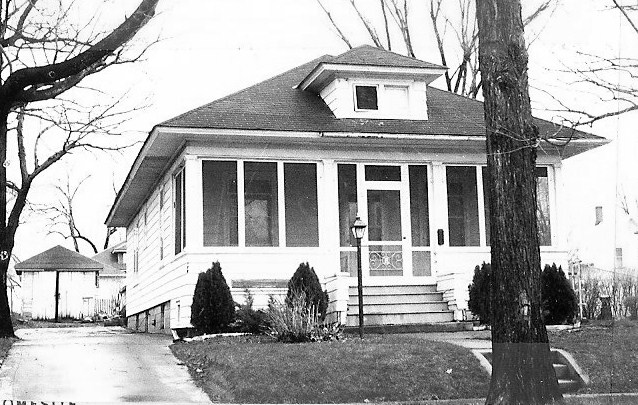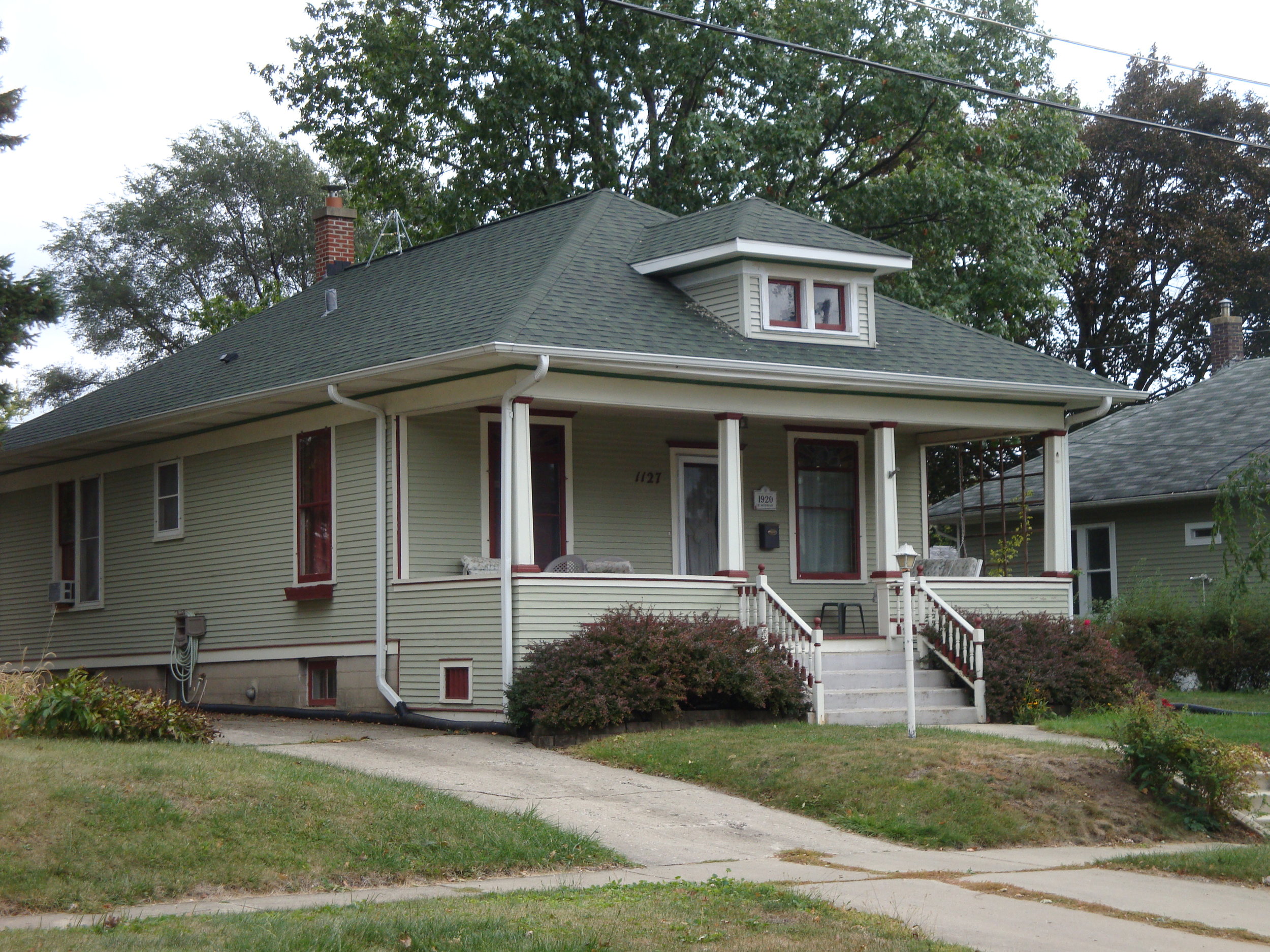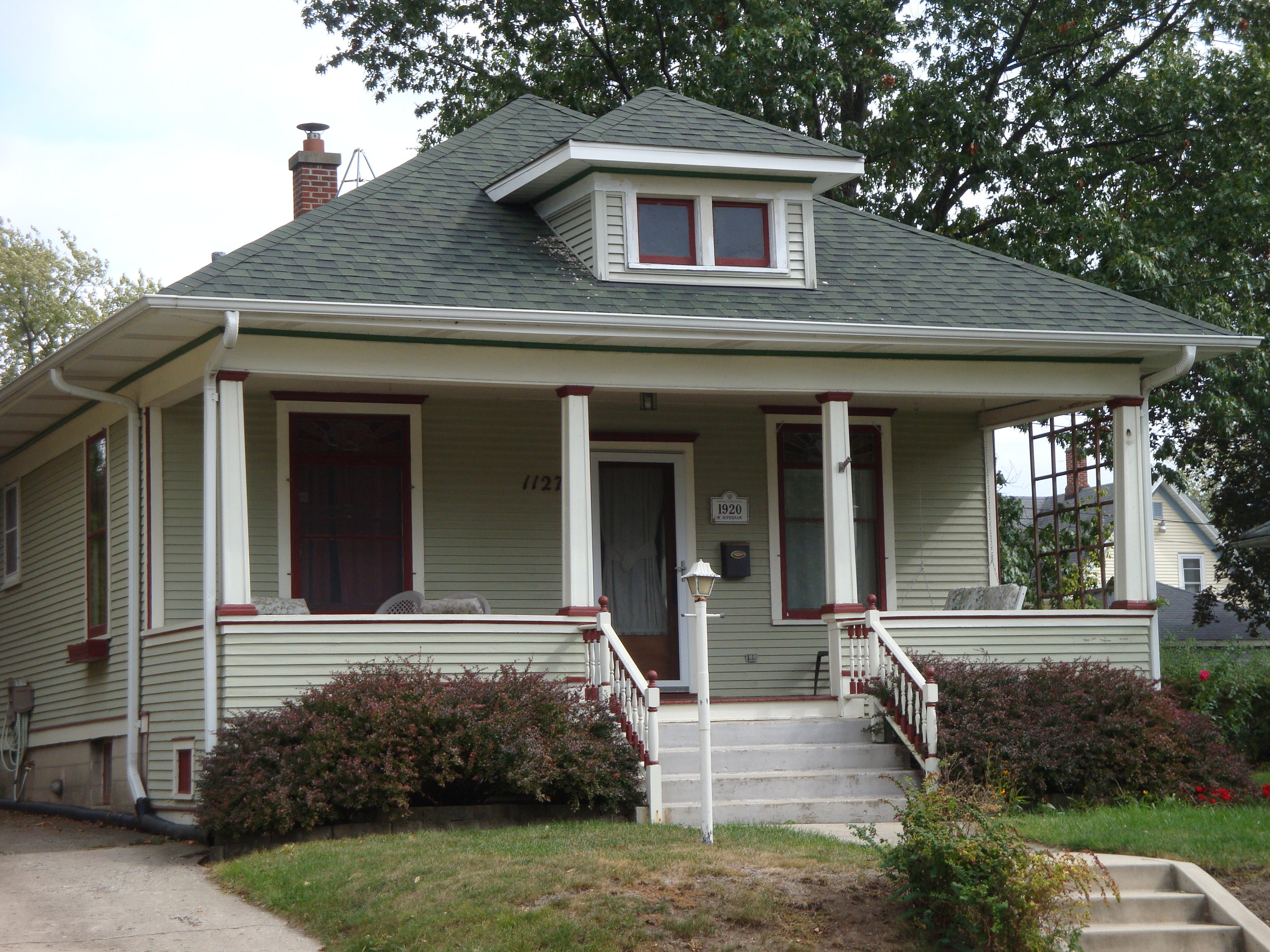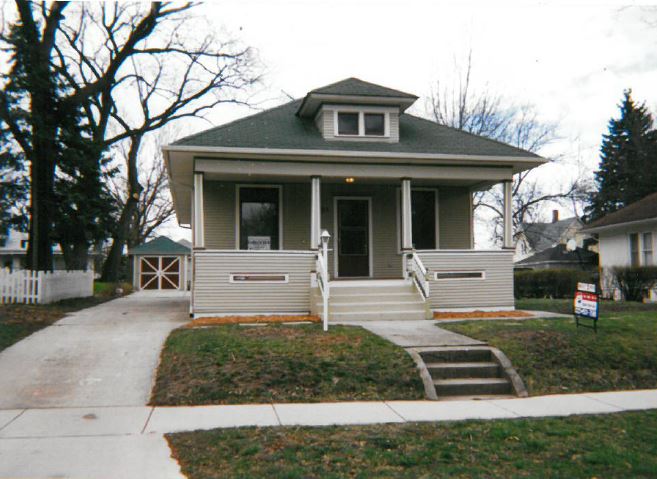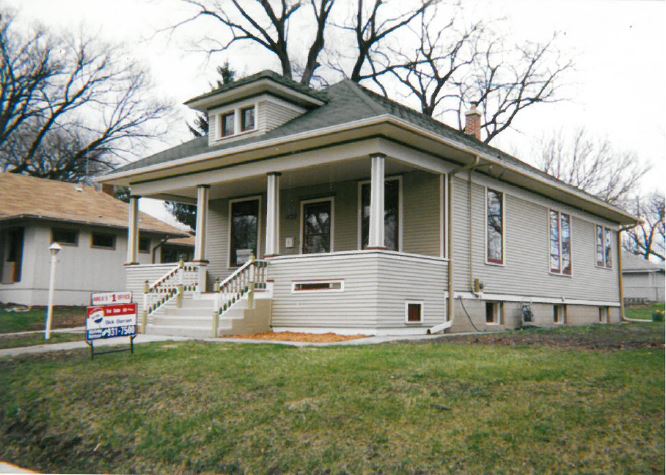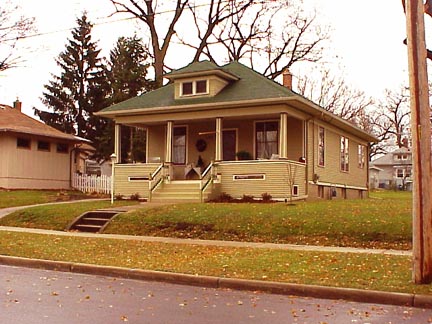1127 MORTON AVENUE
HISTORIC SIGNIFICANCE
In 1908, a sheriff’s sale resulted in the purchased of lots 11, 12, and 13 by C.H. Geister. In 1913, Geister’s heirs had the property conveyed to them from his estate and quit claimed their interest to William Geister. Six years later in 1919, William Geister warranted all of the lots to Charles Supernaw.
Supernaw was an engineer at the A. Y. Reed Gravel Company and his brother, William, was the superintendent. While Charles lived on Bellevue Avenue, he built upon the 1127 Morton Avenue property, as the 1920 Elgin City Directory lists no owner but mentions that the once vacant lots were now under construction.
One year later, 1127 found its first occupant in Frank J. Russell, a watchmaker with the Illinois Watch Case Company, who purchased the home from Charles Supernaw in 1924. Russell sold the house one year later to Gertrude Thurston of Winnetka, Illinois. The following year, in 1926, Roy W. Beverly, who was a driver for the Elgin Sanitary Milk Company, took residence in 1127 Morton. The Beverly family continued to rent until 1946, when Roy and his wife, Isabel, finally purchased the home from Gertrude Thurston. A number of years later, the house was rehabilitated.
ARCHITECTURAL SIGNIFICANCE
1127 Morton Avenue is a nice example of a Bungalow. Common characteristics of the Bungalow include the height of one-story, the hipped roof and matching hipped dormer, boxed tapered porch columns and the brick chimney. The one-over-one double-hung windows are also indicative of the form and period. Later alterations in the 1980s, such as the vinyl siding, take away from the historic character but it is still considered as contributing to the local significance of the neighborhood from the Historic Resources In the Northeast Neighborhood: A Summary and Inventory.
TIMELINE OF PREVIOUS OWNERS
Sources: 2000 Heritage Plaque Application; Audio: TextAloud

